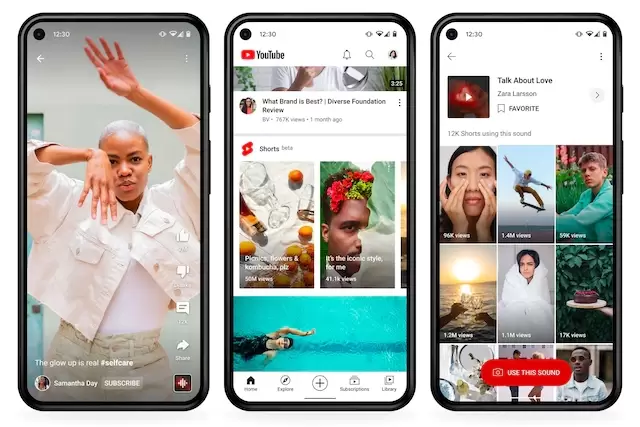So were the Buggles Correct?
 Typically, networks provided free programming but sold ad time to sponsors to run prior to or within the program; this was known as barter syndication. Radio programming grew in popularity through the Depression because it was virtually free and tied listeners around the nation into national events, local news, music and entertainment programs without requiring they spend money on going out. Edward R. Murrow radio show from the 1950s, was brought back in 2005 by NPR. The sponsor brought airtime to advertise during the show -- or the rights to lend their name to the title. After taking a hiatus for five or so years, Keillor resurrected the show in 1993. If you want to join the millions of fans of this old-time radio styled show, check for your local listings. Prior to World War I, radio programming consisted mainly of amateurs trying out the new medium. Arguably one of the most popular radio shows still in existence is Minnesota Public Radio's "A Prairie Home Companion." Harkening back to the format, tone and style of the early radio variety and comedy shows, "A Prairie Home Companion" lets audiences of today hear what it must have been like listening to radio show programming back in the golden age of radio.
Typically, networks provided free programming but sold ad time to sponsors to run prior to or within the program; this was known as barter syndication. Radio programming grew in popularity through the Depression because it was virtually free and tied listeners around the nation into national events, local news, music and entertainment programs without requiring they spend money on going out. Edward R. Murrow radio show from the 1950s, was brought back in 2005 by NPR. The sponsor brought airtime to advertise during the show -- or the rights to lend their name to the title. After taking a hiatus for five or so years, Keillor resurrected the show in 1993. If you want to join the millions of fans of this old-time radio styled show, check for your local listings. Prior to World War I, radio programming consisted mainly of amateurs trying out the new medium. Arguably one of the most popular radio shows still in existence is Minnesota Public Radio's "A Prairie Home Companion." Harkening back to the format, tone and style of the early radio variety and comedy shows, "A Prairie Home Companion" lets audiences of today hear what it must have been like listening to radio show programming back in the golden age of radio.
While sports, politics and news were certainly of interest, radio executives wanted more entertaining fare to entice and retain larger audiences. To learn more about radio and other forms of entertainment, tune in to the next page. Other groups have embraced the art of radio theater, forming their own modern versions of the old-time radio shows. What's now considered the age of golden radio -- the 1920s through the end of the 1950s -- spawned a spate of entertainment shows and genres that still resonate in other mediums today. Have you ever wondered what the age of golden radio was like? A number of other radio shows have aired in the decades following the golden age of radio. It still airs on the radio today and runs a version on television. In this article, we'll learn about early radio programming, unlock the formats of serial drama and comedy, take a peek at how soap operas began and look at similar radio programming that's still popular today. Cox, Jim. "Say Goodnight, Gracie: The Last Years of Network Radio" McFarland: London.
Individual stations (also known as affiliates, stations owned by individuals or companies other than the networks that aired network programs) like KDKA, WJZ, WEAF in New York and WNAC in Boston joined the air and looked to sports events and politics to fill the first national broadcasts. Larger audiences meant the networks could charge the shows' sponsors higher advertising rates. DJs and music shows became popular with teens cruising in their automobiles. The show's host, Garrison Keillor, was very deliberate with this, basing his show on early radio variety programs right down to the format, use of sound effects, live music and comedic sketches. The organist or orchestra played the theme music for the show and small pieces to underscore a transition or cliff-hanger. The announcer usually started the show by reading a recap of the last episode and then setting the stage for the current episode. Also like Phillips, Hummert established a number of devices that are now common plot twists in television today: amnesia, blackmail, exotic diseases, Friday episode cliff-hangers, video shorts long-lost loves and murder trials. Unlike the original radio variety shows, Keillor doesn't have a cadre of mandatory sponsors and instead makes up a number of fictitious sponsors to amusing effect.
They used any number of devices to recreate these noises -- one of which was called a crashbox, a box full of glass, rocks and/or metal that sounded like crashing or falling. One of the first groups formed was the Radio Corporation of America (RCA), put together by General Electric, AT&T, Wireless Specialty Apparatus Company and Westinghouse. Did video really kill the radio star? It took a lot of folks working together to put a radio show on the air. Grab a snack, put your feet up, close your eyes, sit back and just listen. Who doesn't like to get home from a hard day at school or work, grab a snack, put his or her feet up and check blogs, Facebook, YouTube or surf the net in general? How did folks relax when they got home? Folks making the commute from the suburbs to the city relied on their radios for company.
C on tent was created with GSA C ontent Generator DEMO.

Post a Comment for "So were the Buggles Correct?"